
A grassland is an area where the vegetation is dominated by grasses (Poaceae). However, sedge (Cyperaceae) and rush (Juncaceae) can also be found along with variable proportions of legumes, like clover, and other herbs. Grasslands occur naturally on all continents except Antarctica and are found in most ecoregions of the Earth. Furthermore, grasslands are one of the largest biomes on earth and dominate the landscape worldwide. There are different types of grasslands: natural grasslands, semi-natural grasslands, and agricultural grasslands. They cover 31–69% of the Earth's land area.
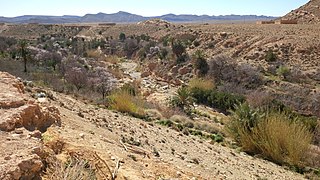
Deserts and xeric shrublands are a biome defined by the World Wide Fund for Nature. Deserts and xeric shrublands form the largest terrestrial biome, covering 19% of Earth's land surface area. Ecoregions in this habitat type vary greatly in the amount of annual rainfall they receive, usually less than 250 millimetres (10 in) annually except in the margins. Generally evaporation exceeds rainfall in these ecoregions. Temperature variability is also diverse in these lands. Many deserts, such as the Sahara, are hot year-round, but others, such as East Asia's Gobi, become quite cold during the winter.
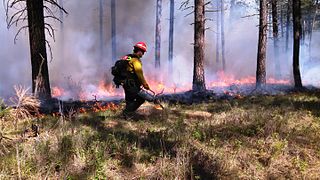
A controlled or prescribed (Rx) burn, which can include hazard reduction burning, backfire, swailing or a burn-off, is a fire set intentionally for purposes of forest management, fire suppression, farming, prairie restoration or greenhouse gas abatement. A controlled burn may also refer to the intentional burning of slash and fuels through burn piles. Fire is a natural part of both forest and grassland ecology and controlled fire can be a tool for foresters.

The Key deer is an endangered subspecies of the white-tailed deer that lives only in the Florida Keys. It is the smallest extant North American deer species.
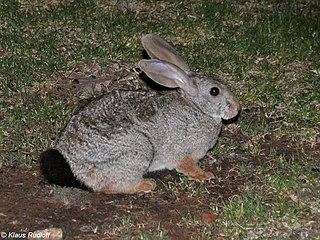
Jameson's red rock hare is a leporid found only on the continent of Africa, mostly in the southern portion of the continent. Zimbabwe and Namibia are thought to have the largest populations of the red rock hare and it is said to be found throughout both countries. South Africa has a population of this red rock hare but it is only found in the northwestern part of the country. Botswana also has a population in the Tswapong Hills.
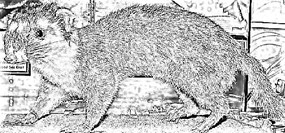
The Bornean ferret badger, also known as Everett's ferret badger or the Kinabalu ferret badger, is a small, nocturnal and omnivorous mammal that is endemic to the island of Borneo. It is a member of the family Mustelidae and is one of six species of the genus Melogale. It is listed as endangered on the IUCN Red List of Threatened Species due to its small distribution range, which includes Kinabalu National Park and Crocker Range National Park.

The mountain reedbuck is an antelope found in mountainous areas of much of sub-Saharan Africa.

Scinax acuminatus is a species of frog in the family Hylidae. It is found in Argentina, Bolivia, Brazil, Paraguay, and possibly Uruguay. Its natural habitats are moist savanna, subtropical or tropical moist shrubland, subtropical or tropical seasonally wet or flooded lowland grassland, freshwater lakes, intermittent freshwater lakes, freshwater marshes, intermittent freshwater marshes, pastureland, rural gardens, heavily degraded former forest, ponds, and canals and ditches. It breeds in bodies of water. It is threatened by eventual habitat loss, but the population is currently fairly stable, as it adapts fairly well to human encroachment and development.

Eleutherodactylus flavescens is a species of frog in the family Eleutherodactylidae endemic to the eastern Dominican Republic. Its natural habitats are mesic forest, and occasionally, mangroves. It is a very common frog in suitable habitat, but has declined in parts of its range. It is threatened by habitat loss caused by infrastructure development and agricultural encroachment.

The Carpentarian grasswren is a species of bird in the family Maluridae. It is endemic to Australia.

The white-tailed swallow is a small swallow belonging to the family Hirundinidae and is endemic to Oromia, Ethiopia. It is commonly referred to as "Benson's swallow" after the ornithologist Constatine Walter Benson, who named the species. This small bird is classified as a vulnerable species by the International Union for Conservation of Nature (IUCN), as there is a progressive declination of the species which now consists of less than 10,000 adult individuals worldwide. It has a surprisingly small range for a swallow, as it is wholly dependent on a cooler "bubble" surrounding its small range, likely for proper breeding success. It is one of the most threatened bird species by climate change and a massive range reduction is projected in the future.
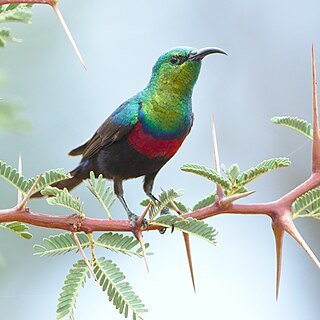
The Marico sunbird is a species of bird in the family Nectariniidae, which is native to woodlands of the eastern and southern Afrotropics.The bird is typically found in the southeast of the continent of Africa. It is of least concern on the IUCN Red List and has an unknown population size that has yet to be quantified. The Marico sunbird has conservation regions located all over its range, so it is unlikely to go extinct.

Van Dam's vanga is a species of bird in the family Vangidae. It is endemic to Madagascar.
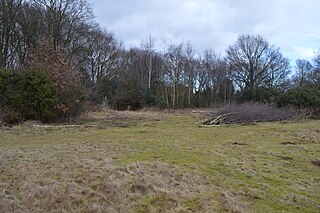
Gamlingay Cinques is a 3.4-hectare (8.4-acre) nature reserve in Gamlingay in Cambridgeshire. It is managed by the Wildlife Trust for Bedfordshire, Cambridgeshire and Northamptonshire.

Sunabeda Wildlife Sanctuary is a wildlife sanctuary and a proposed tiger reserve located in the Nuapada district of Odisha, adjoining Chhattisgarh. It has a total area of 600 km2 (230 sq mi). The sanctuary harbours a great diversity of wildlife habitats, with a vast plateau, multiple valleys, gorges and magnificent waterfalls. The sanctuary forms the catchment area of the Jonk River, over which a dam has been constructed to facilitate irrigation. The Indra nullah and Udanti River lies to the south of the sanctuary. The important vegetation of the site comprises dry deciduous tropical forest.

The Manitoba Tall Grass Prairie Preserve is located in southeastern Manitoba near Gardenton and Vita, this is about 50 kilometres (31 mi) south of Steinbach, Manitoba. It is one of the last remaining stands of tallgrass prairie in Manitoba and is part of the Tallgrass Aspen Parkland conservation area in Manitoba and Minnesota. Several groups and organizations help in land preservation in the Manitoba Tall Grass Prairie such as the Nature Conservancy of Canada, Nature Manitoba, Environment Canada, Manitoba Conservation and the Manitoba Habitat Heritage Corporation.
In gridiron football, there are several different rulings for encroachment:
- In the NFL, encroachment occurs when, before the snap, a defensive player illegally crosses the line of scrimmage and makes contact with an opponent or has a clear path to the quarterback. Play is immediately stopped, just as it is with a false start.
- In high school, encroachment includes any crossing of the neutral zone by the defense, whether contact is made or not. It is similar to offside except when it occurs, the play is not allowed to begin. Like offside violations, the violating team is penalized five yards.
- In the NCAA, an encroachment penalty is called, when there is an offensive player beyond the line of scrimmage after the snapper touching the ball. There is no encroachment for defensive players in college football.
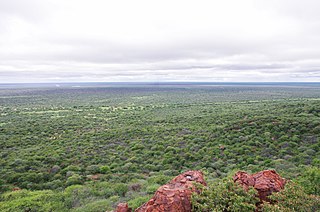
Woody plant encroachment is a natural phenomenon characterised by the increase in density of woody plants, bushes and shrubs, at the expense of the herbaceous layer, grasses and forbs. It predominantly occurs in grasslands, savannas and woodlands and can cause biome shifts from open grasslands and savannas to closed woodlands. The term bush encroachment refers to the expansion of native plants and not the spread of alien invasive species. It is thus defined by plant density, not species. Bush encroachment is often considered an ecological regime shift and can be a symptom of land degradation. The phenomenon is observed across different ecosystems and with different characteristics and intensities globally.
Conservation in Angola is centered around the protection of the country's biodiversity and natural heritage. While Angola contains a remarkably diverse array of ecosystems and species, conservation has not been a priority for most of its history. Three decades of intense conflict during the Angolan Civil War had a catastrophic effect on the nation's environment, but since the end of the war in 2002, both the Angolan government and non-state actors have gradually established programs to protect the ecological well-being of the country. However, major structural issues and lack of political will have so far kept intervention limited, and many habitats and species remain deeply threatened.
















